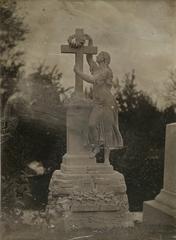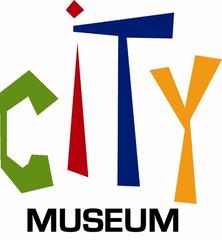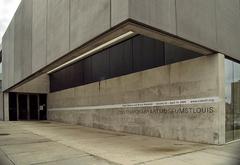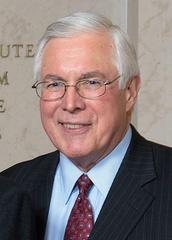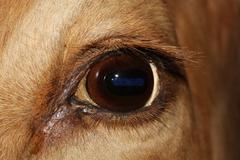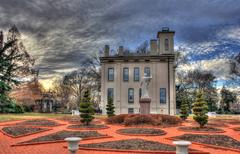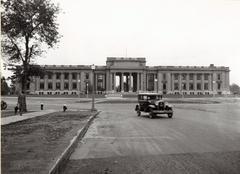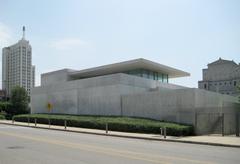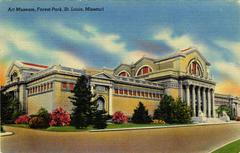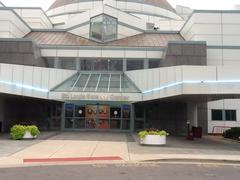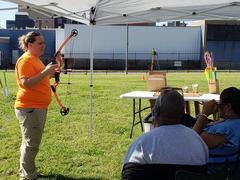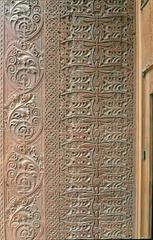Central Institute for the Deaf: Visiting Hours, Tickets, and Historical Significance in St. Louis
Date: 15/06/2025
Introduction
The Central Institute for the Deaf (CID) in St. Louis, Missouri, is a pioneering institution whose influence has shaped the landscape of deaf education, audiology, and cultural advocacy for over a century. Founded in 1914 by Dr. Max A. Goldstein, CID’s mission was revolutionary: to teach deaf and hard-of-hearing children to listen and speak, emphasizing oralism over sign language (Becker Library; CID Official Site). Today, CID remains at the forefront of research, professional development, and inclusive education, and its campus—nestled in St. Louis’s Central West End—offers visitors a unique blend of historical significance, architectural distinction, and ongoing innovation.
This comprehensive guide provides essential information for prospective visitors, including visiting hours, admission details, accessibility, guided tours, and practical recommendations. It highlights the historical and cultural legacy of CID, details its architectural features, and connects you to nearby St. Louis attractions to enrich your experience.
Contents
- Founding and Vision
- Institutional Growth and Contributions
- Educational Philosophy
- Facilities and Location
- Visitor Information
- Visiting Hours & Tours
- Admission & Tickets
- Accessibility
- Photography
- Travel Tips & Nearby Attractions
- Architectural Highlights
- Special Exhibits & Museum Collections
- Professional Development & Community Engagement
- Awards and Recognition
- Frequently Asked Questions (FAQ)
- Planning Your Visit
- Visuals & Media
- Sources
Founding and Vision
Dr. Max A. Goldstein, an influential otologist, established CID in 1914, inspired by oralist techniques he encountered in Europe. Goldstein’s vision was to create a “comprehensive center” uniting medical professionals, educators, and researchers to help deaf children acquire spoken language and integrate into society. This holistic approach—combining education, clinical care, and research—set CID apart as an international leader in its field (Becker Library).
Institutional Growth and Contributions
Professional Training: CID’s teacher training program—initiated in 1914 and affiliated with Washington University in 1931—became a model for deaf education nationwide, evolving into the renowned Program in Audiology and Communication Sciences (PACS History).
Research and Innovation: CID’s research division contributed significantly to the fields of audiology and otolaryngology, laying groundwork for hearing aids, cochlear implants, and diagnostic audiology (CID Official Site).
Community Service: The institute’s free hearing clinic has long provided vital care to the St. Louis community, reflecting CID’s ethos of accessibility for all (Becker Library).
Notable Figures
- Hallowell Davis: Advanced auditory science and early hearing aid development.
- Rafael Lorente de Nó: Pioneered research on auditory neural pathways.
- Ira Hirsch: Led groundbreaking studies in speech perception.
Educational Philosophy and Impact
CID is historically associated with oralism, focusing on developing listening and spoken language skills instead of exclusively using sign language. While this approach was controversial, it influenced educational practices worldwide. CID’s curriculum blends speech therapy, auditory training, and academic instruction, shaping how generations of deaf children are educated (CID Official Site; Wikipedia).
Facilities and Location
CID’s campus at 825 S. Taylor Avenue (and formerly 4560 Clayton Avenue) is situated in the vibrant Central West End, surrounded by leading medical and educational institutions (Missouri Commission for the Deaf and Hard of Hearing; Riverfront Times). The site features:
- Classrooms and therapy spaces
- Research laboratories
- Clinical facilities
- Residential accommodations
- The Central Institute for the Deaf Museum
Visitor Information
Visiting Hours & Tours
- Museum and campus visits are by appointment only.
Regular hours: Monday–Friday, 9:00 AM–5:00 PM. - Guided tours are available for individuals and groups; contact CID in advance to schedule (CID Contact).
Admission & Tickets
- Admission is free for general visits and self-guided tours.
- Guided tours and group visits require advance booking.
- Donations are welcomed to support educational programs.
Accessibility
- Fully accessible campus: Wheelchair access, assistive listening devices, and accommodations for additional needs are available upon request.
- Notify staff in advance for any special requirements.
Photography
- Photography is permitted in designated areas; please ask staff for guidelines.
Travel Tips & Nearby Attractions
- Getting There: Accessible by car and public transportation; nearby MetroLink and bus stops serve the area.
- Parking: Limited on-site parking; public lots and street parking available.
- Central West End: Enjoy historic architecture, dining, and shopping.
- Nearby Attractions: Forest Park (St. Louis Art Museum, Missouri History Museum, St. Louis Zoo), Missouri Botanical Garden, Cathedral Basilica of St. Louis.
Architectural Highlights
Designed by William B. Ittner in 1916, the original building is a landmark of Mediterranean Revival architecture, featuring terra cotta ornamentation, Romanesque arches, and Spanish tile roofing (Built St. Louis).
A 2000 expansion by Mackey Mitchell Architects seamlessly blended historic and modern elements, creating acoustically optimized classrooms and cutting-edge research spaces (Mackey Mitchell Architects).
Campus Features:
- Landscaped gardens and outdoor learning spaces
- Innovative playground and athletic facilities
- State-of-the-art audiometric and therapy suites
- Specialized centers for early childhood, family engagement, and professional development (CID Facilities)
Special Exhibits & Museum Collections
The Central Institute for the Deaf Museum preserves CID’s legacy, showcasing:
- Historic hearing aids, cochlear implant prototypes, and audiometers
- Curriculum materials, lesson plans, and speech training tools
- Photographs, oral histories, and alumni stories
- Documentation of CID’s role in professional training and advocacy (CID Museum)
Professional Development & Community Engagement
CID’s Emerson Center for Professional Development delivers workshops, curricula, and online courses to educators and clinicians globally (CID Professional Development).
Community engagement includes public lectures, outreach programs, and events like Deaf History Day, all fostering a deeper understanding of Deaf culture and the challenges faced by those with hearing loss.
Awards and Recognition
CID’s commitment to educational and architectural excellence has been recognized with:
- Regional Excellence Award (St. Louis Construction News and Review)
- Construction Keystone Award (Associated General Contractors of St. Louis)
- Landmarks Association of St. Louis: Eleven Most Enhanced Sites
- Impact on Learning Award (School Planning and Management magazine)
(CID Facilities)
Frequently Asked Questions (FAQ)
Q: What are the CID museum and campus visiting hours?
A: By appointment, Monday–Friday, 9:00 AM–5:00 PM. Schedule in advance.
Q: Is there an admission fee?
A: Admission is free. Donations are welcomed.
Q: Are guided tours available?
A: Yes, by appointment for individuals and groups.
Q: Is the campus accessible?
A: Yes, fully accessible with accommodations upon request.
Q: How do I schedule a visit?
A: Contact CID via phone or email.
Q: What else is nearby?
A: Forest Park, Missouri History Museum, St. Louis Art Museum, Central West End dining and shopping.
Planning Your Visit
- Schedule in advance: Contact CID to book your tour or visit.
- Allocate 1–2 hours: Time for exhibits, tours, and nearby exploration.
- Support the mission: Donate, attend events, or subscribe to newsletters (CID About).
Visuals & Media
- High-resolution images of CID’s historic and modern buildings
- Interactive campus map and virtual tour (see CID’s official website)
- Social media channels for updates, events, and virtual resources
Summary
The Central Institute for the Deaf stands as a vital institution in deaf education, audiology, and cultural preservation. Its unique oralist philosophy, groundbreaking research, and dedication to inclusivity have impacted countless lives across the globe. The campus’s architectural heritage and its museum’s engaging exhibits offer visitors an unparalleled opportunity to explore the history and future of deaf education. Plan your visit today—and enrich your experience by discovering other St. Louis historical gems nearby (Becker Library; CID Official Site; PACS History; Built St. Louis).
Sources and Further Reading
- Becker Library – History of Central Institute for the Deaf
- Wikipedia – Central Institute for the Deaf
- CID Official Site – History
- CID About
- Built St. Louis – Central Institute for the Deaf
- Mackey Mitchell Architects – CID Project
- PACS History, Washington University
- CID Professional Development
- St. Louis Public Radio – CID History
- CID Museum, Museums Database
- Missouri Commission for the Deaf and Hard of Hearing
- Riverfront Times – Central Institute for the Deaf
